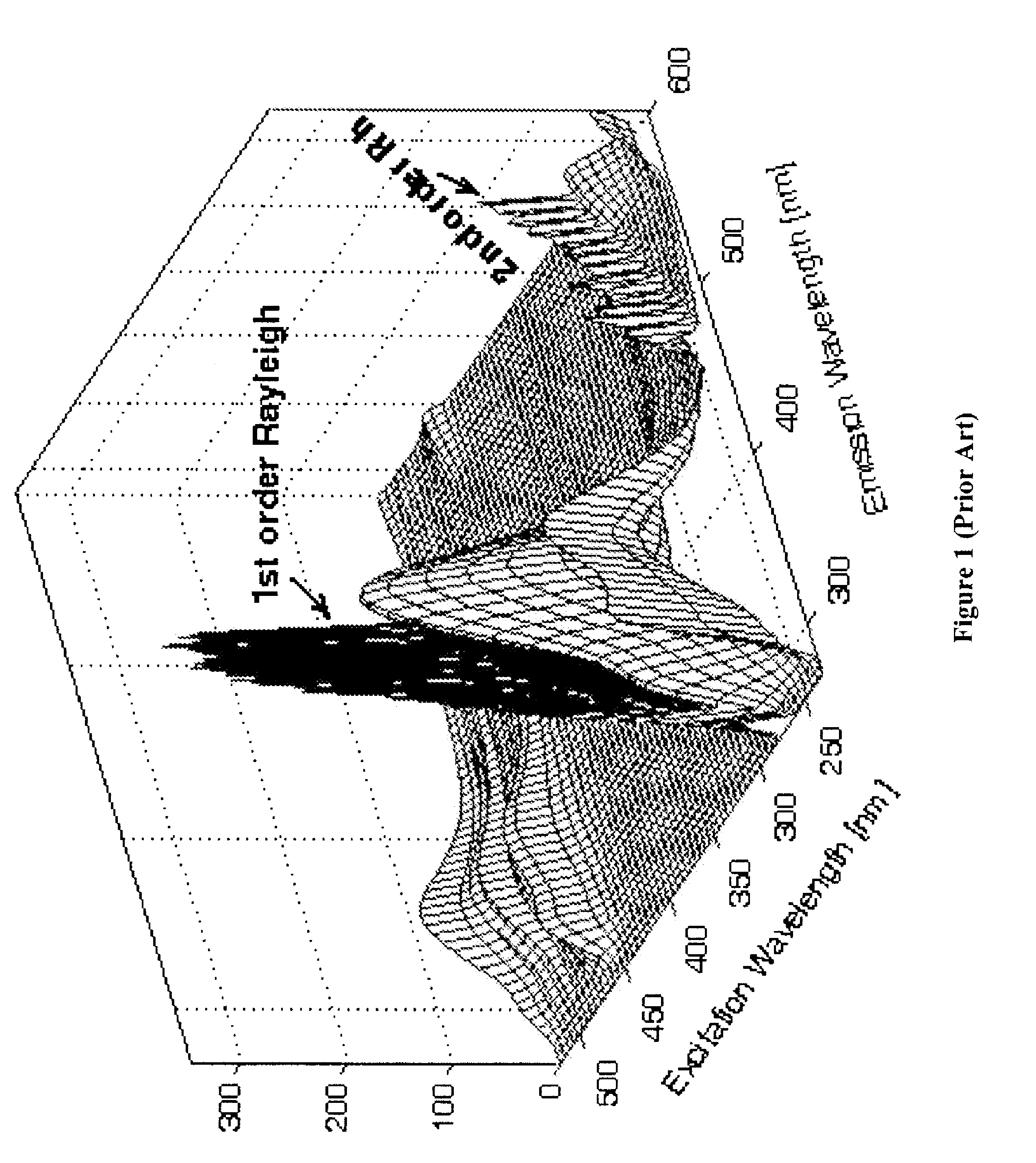Similarity index: a rapid classification method for multivariate data arrays
a multi-variate data and similarity index technology, applied in the field of quantitative and qualitative analysis of materials or chemicals, can solve the problems of complex aqueous based mixture analysis, time-consuming, difficult and time-consuming, and require deep mathematical knowledge and expertise, and achieve the effect of rapid analysis of complex data sets
- Summary
- Abstract
- Description
- Claims
- Application Information
AI Technical Summary
Benefits of technology
Problems solved by technology
Method used
Image
Examples
case study 1
[0076] The secondary stock solution was diluted by Millipore water to produce a 1.375×10−6 M working solution of HPTS in phosphate buffer, whose pH was 7.6. Of this working solution, forty-nine separate measurements were made for the EEM and TSFS data collection over thirteen days. HPTS is a fluorophore whose emission properties are very sensitive to changes in acidity (pH value), hence the need for a buffered solution.
case study 2
[0077] A series of HPTS solutions in phosphate buffer at ten different concentration levels were prepared by diluting the secondary stock solution with Millipore water. They are summarized in Tables 1A-1B.
case study 3
[0078] Forty-five EEM spectra of a 1.375×10−6 M working solution of HPTS in phosphate buffer measured over twelve days as in Case study 1 were utilized as a set of seeds. A variation amounting to 3.0, 4.0, 5.0, 6.0, and 7.0% of the fluorescence intensity was individually forced on these seeds to generate five EEM simulation scenarios. For each of these five scenarios, zero-mean Gaussian noise with 0.2% standard deviation (or uncertainty) was randomly augmented into 1800 simulated EEM data. In such a way, another five TSFS simulation scenarios were also generated.
PUM
 Login to View More
Login to View More Abstract
Description
Claims
Application Information
 Login to View More
Login to View More - R&D
- Intellectual Property
- Life Sciences
- Materials
- Tech Scout
- Unparalleled Data Quality
- Higher Quality Content
- 60% Fewer Hallucinations
Browse by: Latest US Patents, China's latest patents, Technical Efficacy Thesaurus, Application Domain, Technology Topic, Popular Technical Reports.
© 2025 PatSnap. All rights reserved.Legal|Privacy policy|Modern Slavery Act Transparency Statement|Sitemap|About US| Contact US: help@patsnap.com



